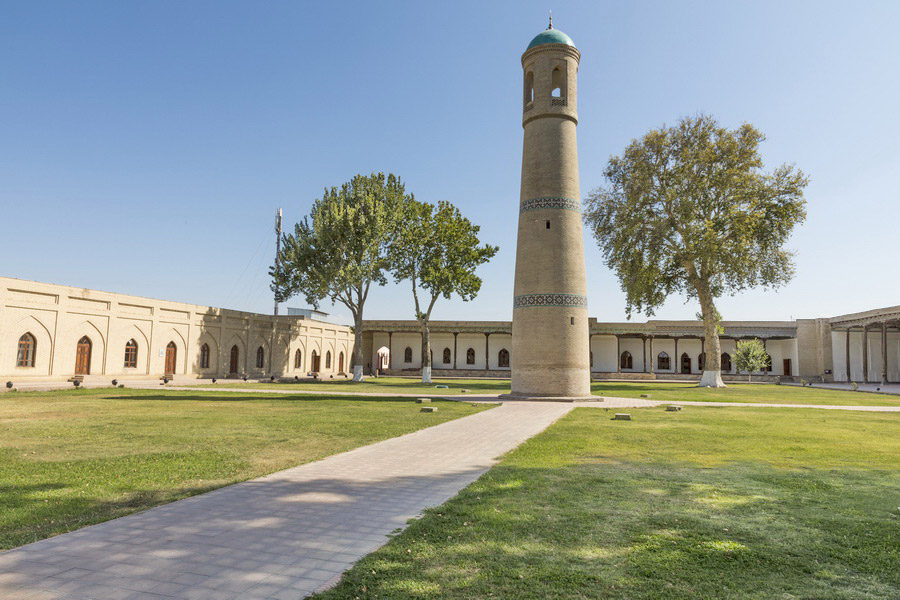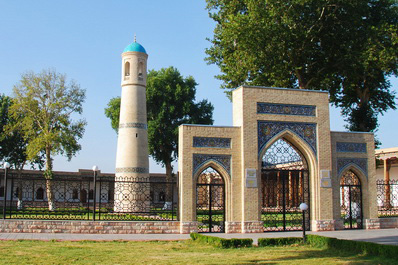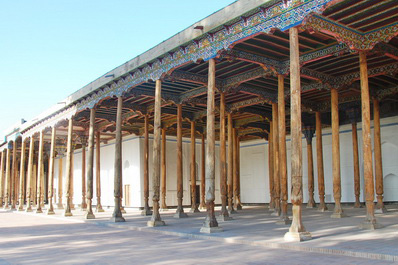Jami Mosque, Kokand

The Jami Mosque is a magnificent example of Islamic architecture and one of the largest religious ensembles in Kokand, a city in eastern Uzbekistan. The complex includes a mosque, a madrasah, a spacious courtyard, a minaret, and an ayvan (balcony). Built in the first half of the XIX century during the reign of Umar Khan, the mosque became a vivid symbol of the Kokand Khanate’s golden age. The architects of that era skilfully combined the finest traditions of Central Asian Islamic art, giving the Jami Mosque its distinctive appearance and reinforcing its importance as the spiritual heart of Kokand.
Architecture and decor
More than 200 craftsmen and decorators worked on the construction of the Jami Mosque, highlighting the beauty of each architectural detail and enriching them with refined ornamental designs. Of particular note is the iwan - an open gallery with a painted ceiling supported by 98 wooden columns. These columns are adorned with exquisite carvings featuring intricate geometric patterns, floral motifs, and delicate openwork details. The capitals of some columns were created using the muqarnas technique, forming multi-tiered structures with rounded recesses and projecting “ribs” that resemble honeycombs or stalactites. The ceiling of the iwan is decorated with bright paintings and intricate floral ornaments.
Next to the iwan stands the khanaka, whose ceiling is also lavishly ornamented. Around the perimeter of the courtyard are hujras (cells), while at the centre rises a minaret with an arched rotunda and a rounded dome. The mosque’s interiors feature fine ganch carvings and, like the iwan, are supported by wooden columns. The walls of the prayer hall are painted white, symbolising the purity of spiritual thought, while the floor is covered with green carpets - a colour in Islam associated with life and fertility.
The Jami Mosque remains an active place of worship, gathering Muslims for daily prayers and religious celebrations. It is also among Kokand’s most significant landmarks, embodying the city’s cultural heritage and rich history. Every corner of the complex reflects the timeless beauty of the East, inspiring visitors to reflect on its enduring traditions.



